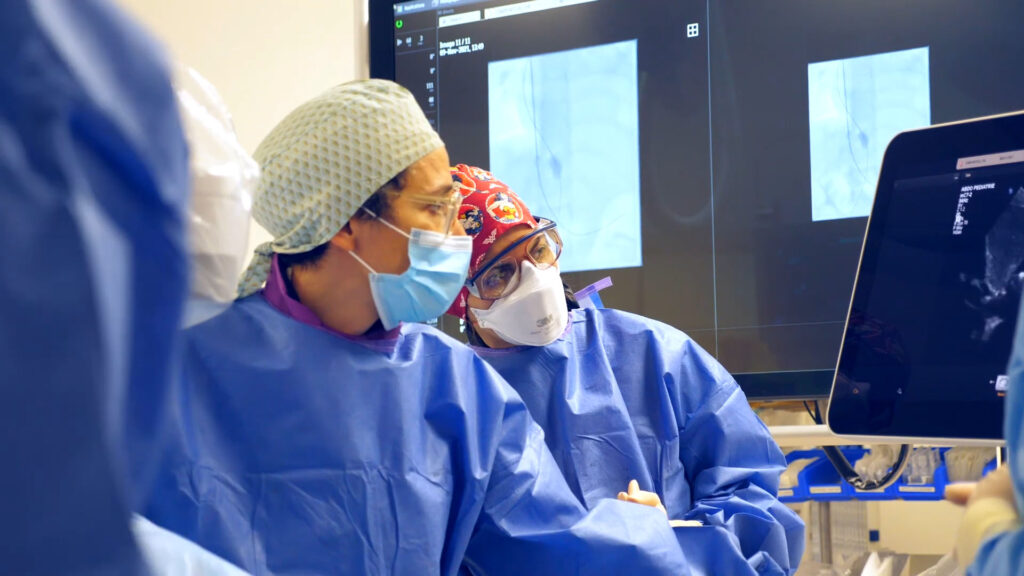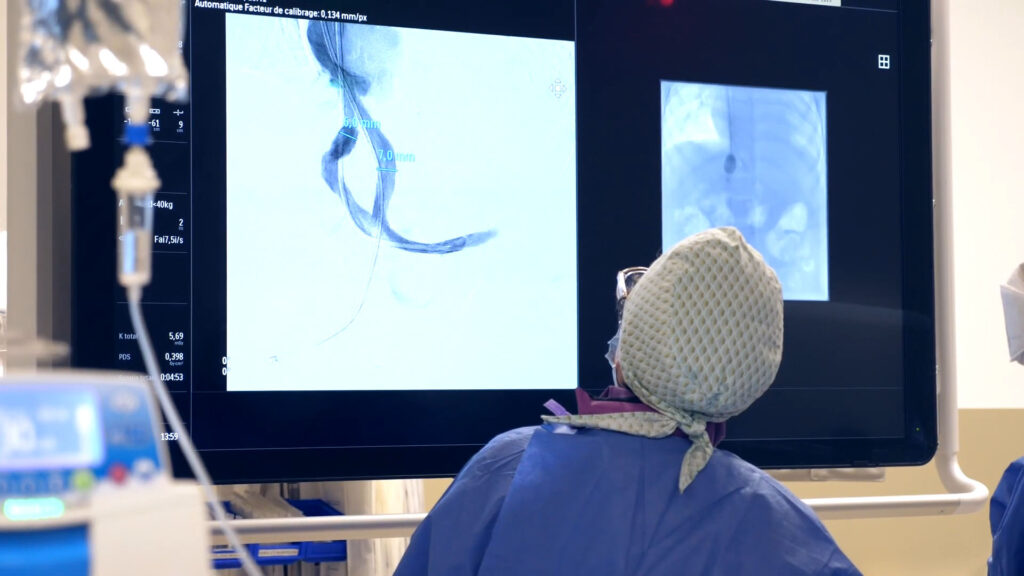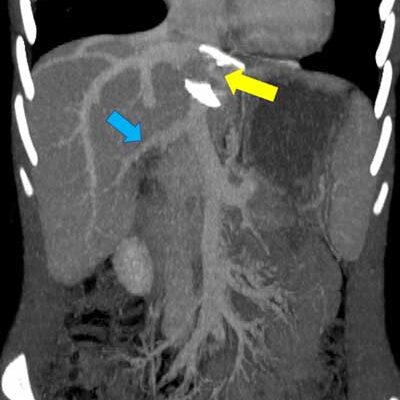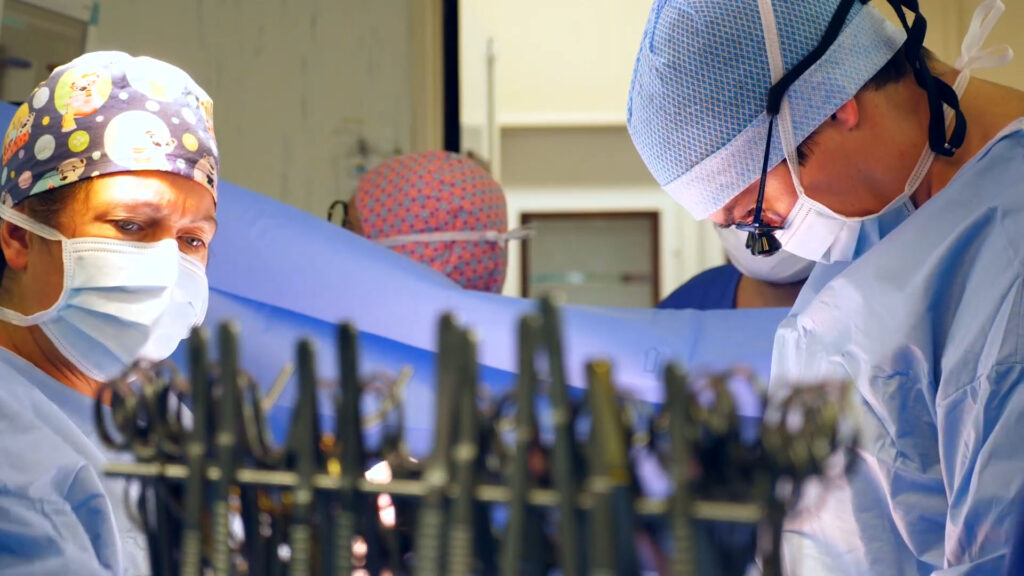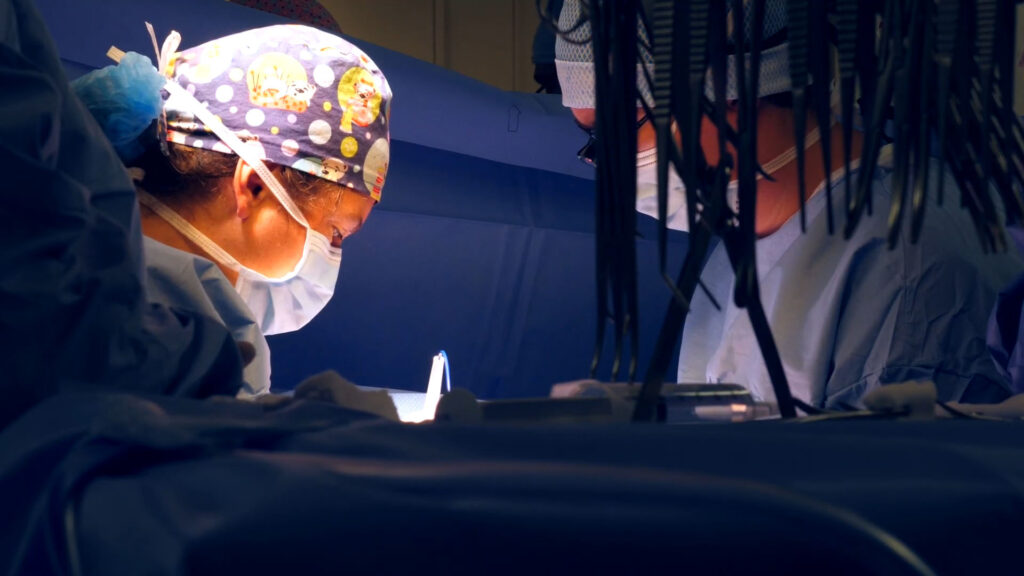Management of Congenital Portosystemic Shunts
As CPSS may cause complications, closure of persistent CPSS beyond the age of 1 year should be discussed. There is no international consensus. However, it is now admitted in most centers that closure could be performed after the age of 1 or 2 years. In very exceptional cases neonatal closure of extrahepatic CPSS can be proposed.
Before closure, a complete workup is performed to search for complications.
CPSS can be closed by interventional radiology (through the vessels) or surgery. According to the anatomy, the portal pressure during the occlusion of the CPSS, and the context, closure can be done in one or two steps.
In rare cases, a wait-and-see strategy can be proposed.
A prolonged follow-up is necessary in any case to search for a complication when the CPSS is patent and to check the evolution of complications in case of closure.
Interventional radiology allows the mini-invasive treatment of CPSS according to their anatomy
Surgery allows the treatment of CPSS according to their anatomy
